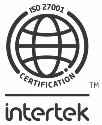Build or Buy?: Insurtech Business Value

A 2021 Deloitte report concluded that 95% of insurers are actively accelerating or looking to speed up digital transformation to maintain organisational resilience.
In a post-pandemic business world, technology is critical for any insurance company looking to expand efficiencies. Software systems that simplify — or automate — back office processes, from customer relationship management to analytics and reports, empower the modern insurer by freeing up resources and time.
The case for technology is clear. However, when it comes to insurtech, it can be tricky to decide whether to choose the flexibility of building your own software or opt for the quicker option of buying a tried-and-tested third-party product off the shelf.
In this guide, we weigh up the pros and cons of building from scratch or buying and integrating technology solutions.
The Big Question Facing Today’s Insurers: Build or Buy?
When identifying whether to build or buy, the first factor to consider is the problem you’re striving to solve. As an organisational leader, ask yourself: is the issue a common problem or a unique one facing your company specifically?
As you assess your options, it’s vital to account for the total expenditure of your organisation’s resources when building or buying software. When making a decision, consider both costs and capabilities.
Cost — assess how much it will cost to build tech from the ground up and to maintain it over the next few years.
Capabilities — evaluate what the purpose of the software is, and which software products already on the market currently fulfil your needs.
The Three Scenarios Facing Insurers
1. Internal Option, Continuing to Use What You Have
You already have a core system. Wrapped around it are several different systems ranging from general ledger software, rating databases and content management.
From the start, you’re well aware that to create a new proposition, your organisation will need to make changes across all of the different digital systems.
2. Internal Option, Building New From Scratch
You pull together a project team that can manage a program of work to create the requirements. Then, the roadmap branches out to the relevant developers to build out the systems.
(This option assumes that each system has the capability to meet the needs of the target market).
3. External Option, Buying In
You work with a digital architecture team to browse the market and see whether there’s a solution that comes close to meeting your organisation’s requirements.
Pros and Cons of Each Approach
Build: Pros
Your organisation owns the code, and you can build it to work with other software in your tech stack.
Regular in-house input allows employees to give direct feedback through the process.
If the software is lacking a specific feature, you have the ability to pivot and re-prioritise.
Build: Cons
Even with an established development team, building software from scratch takes a huge amount of time, planning, expertise, resources, and effort from a myriad of stakeholders .
You and your team must be prepared to spend time gathering information and research so that a custom-built solution will be appropriate for your business’ needs.
There are a wide variety of software options on the market. That means there’s a high chance someone will have already built software very similar to what you’re planning — wasting time by duplicating work.
Beyond implementation, you’re responsible for maintaining code and supporting your users.
Your organisation is responsible for technical debt, meaning it’s your obligation to fix flawed or broken features in the future.
Buy: Pros
Tried-and-tested, packaged insurtech solutions typically model best practices and industry compliance requirements.
Upfront costs are almost always lower compared to building in-house.
When you buy a software product the time to implement can be as little as weeks or months — rather than waiting years to build from scratch.
The number of features varies on the specific software product, but there’s often a rich variety of features and functionalities in off-the shelf software.
A third-party solution will be updated regularly with new features and ongoing maintenance. Bugs and feature requests aren’t your teams' problem.
Well-established vendors with highly configurable systems offer training for your team to get up to speed and use the software to its full extent.
Buy: Cons
When a feature is unavailable or the software doesn’t integrate well with a vital tool, you need to submit a request to the development team.
Not all off the shelf insurtech solutions are created equal. Some are rigid and inflexible meaning they may act as a framework you can configure, but not customise extensively.
Insurtech Business Value
By leveraging technology to free up employees for value-adding tasks, investing in insurtech can strengthen customer experience, reduce wasted time and resources, and ultimately increase profit margins for insurers.
While developing a custom-built solution in-house may seem like the best way to tackle a specific business challenge head on, building from scratch requires a disproportionate allocation of resources to create, implement, and then maintain post-launch.
The good news is that insurance companies don’t have to try and digitally transform alone. By partnering with insurtech companies that have an in-depth understanding of the modern insurance landscape, insurers can harness tried-and-tested software that optimises customer offerings.
Enter INSTANDA: How Can an Insurance Software Company Help?
Insurance software companies like INSTANDA empower insurers, MGAs, and brokers to quickly craft insurance products and provide scalable, organisation-wide benefits.
INSTANDA’s modular platform makes customising reach, acquisition or developing existing customer relationships simpler with data-fueled, quick-to-market configurable settings — without the need of a specialised development team.
With the ability to create hyper-personalised insurance products comes greater opportunities to reshape the insurance ecosystem you strive to serve.
Discover an Insurance Platform that’s Trusted by Leading Insurers Worldwide
Whether digitising an entire business and multiple books, taking a vertical slice of an existing business, or launching a new innovative product, INSTANDA provides everything needed for data integration or designing new products.
Get in touch today with our team of friendly professionals to streamline your insurance life-cycle.
Kick-start your journey by requesting a demo of INSTANDA.





